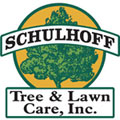Successful landscape design considers the appearance and design of your home; the space you have available for plants, trees, rocks, and grass; and the balance of elements that work together.

The focal points of your yard design is usually the trees you plant, and the type of tree you choose will impact your design for decades. Therefore, choosing the wrong tree can be a costly mistake. Some trees might look nice as saplings but become a nuisance or look out of place as they grow. Sometimes, certain species are not suitable for the neighborhood or end up causing trouble with your home.
Follow these tips for choosing a front-yard tree to help avoid some common problems that homeowners experience down the road.
- Consider the Mature Size and Shape of the Tree
The first consideration for your tree choice should be mature size. A lot of people go to a tree farm or nursery and see beautiful young maples, oaks, and lindens. These trees are indeed lovely to look at. The have unique leaf shapes and full, glossy foliage. However, these trees are slow-growing giants that will tower over your house.
For front yards, smaller trees are more manageable. They allow your house to be seen easily from the road. They still provide some shade, but they don’t overpower the street. You might look for a tree that has a mature height of about 25–40 feet. These trees include:
- Crabapple varieties. These trees have a natural small structure, and they will never grow taller than a two-story house or raised ranch house.
- Schubert chokecherry tree. These trees also stay smaller, and they have beautiful red leaves throughout the summer, which makes the tree practical and beautiful for front yards.
- Hawthorne varieties. Hawthorne trees have attractive orange-colored bark and small flowers in the spring. They have a delicate branch structure that makes them perfect for smaller front yard, with a mature height of no more than 30 feet.
Your local tree service can recommend other small trees. More and more varieties are cultivated to appeal to smaller landscape designs. You might choose a lilac, a clump birch, or an Amur cherry tree, depending on the look you want for your home.
- Research the Root Structure
After you find trees that are small in size, you also want to make sure the trees won’t damage your home.
For example, some varieties of willow tree will remain small, but their roots are hydrophilic, which means they aggressively seek water. Because the roots have such a far and powerful reach, they can upset sidewalks, crack concrete driveways, and infiltrate buried sewer lines.
Generally, you should avoid any tree that has a large canopy breadth if you have sewer lines that run through the front of the yard. The breadth of the canopy at the tree’s mature height will generally equal the spread of the roots below. Never plant a large tree near underground plumbing.
- Take Maintenance Into Account
Some trees require more extensive pruning and yearly maintenance. For example, fruit trees, including the crabapple and cherry varieties listed above, need more pruning and growth direction. Some other trees don’t need as much attention or cleanup.
For example, hawthorn trees do produce small berries, but they don’t fall and stain like the larger fruits of crabapple trees. Some people love the smell and beauty of apple blossoms and find the autumn mess a worthwhile trade off, but others find the cleanup tedious and want a tree that requires less maintenance.
Also, since incorrect pruning can ruin the appearance and health of a tree, you should factor in the expense of professional pruning. Some trees need to be pruned more often than others. If you have very little time, consider getting a tree-like shrub, such as Japanese holly, that is low maintenance but still provides height and beauty.
- Check City Guidelines and Ordinances
Some cities have restrictions for the kinds of trees you can plant in your front yard and in boulevards. You might need to plant trees of a specific size in order for the neighborhood to have a uniform look. You also might not be permitted to plant trees that are too large or invasive.
Homeowners associations can also restrict the types of trees people can plant. If you choose a tree without checking for HOA restrictions, you may not only lose money on the tree but also pay to have it removed.
- Choose a Tree with Unique Features
Finally, don’t forget that the main purpose of the tree for the front yard is beauty. You want a tree that has some sort of unique feature. Check for trees that have beautiful fall foliage, a cool bark pattern, winter berries, or flowers in the spring. These are the trees that add the most curb appeal.
For more information, contact us at Schulhoff Tree & Lawn Care, Inc.
